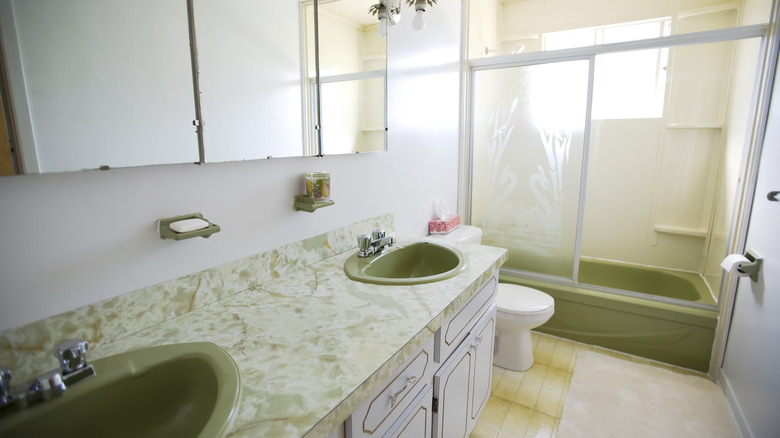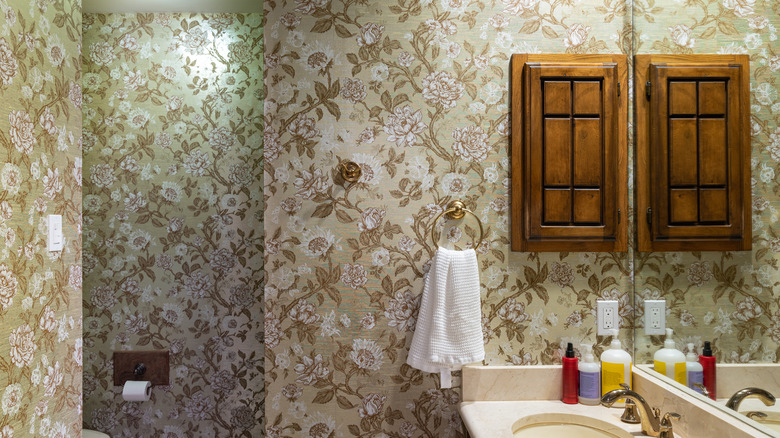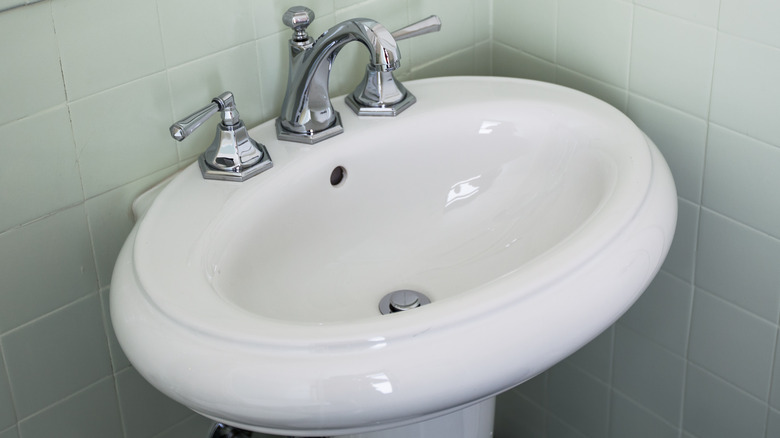What You Should Know Before Renovating That Vintage Bathroom
Vintage bathrooms can be a divisive topic among designers and homeowners. While distinctive design elements from decades past hold a lot of charm and history, some would rather just start from scratch with more contemporary and trend-worthy designs. Others will meticulously maintain or even restore old design elements that have fallen away during earlier remodels. Where you fall in this debate may depend entirely on your aesthetic preferences or love of vintage homes and antiques. It may also depend on completely practical considerations like budget and labor for a potential remodel.
According to New York City real estate broker Ian Katz, you may want to reconsider before totally ripping out a vintage bathroom and replacing it with a new one. He tells U.S. News, "Bright and pastel colors and unique decorative wallpapers are back in vogue, as are repurposed fixtures and fittings. These features are often found here in NYC in idiosyncratic and 'non-cookie cutter' prewar properties, and buyers who like this look and feel — and want to use the bathroom as-is — have begun to compete with those who would tear them out." In addition, keeping or restoring an original bathroom can pay off in the real estate market, with many buyers looking for unique spaces that preserve these older elements.
Old styles, new popularity
Unlike other rooms in the home that may suffer from outdated elements like stained linoleum kitchen floors and dull formica counters, vintage bathroom fixtures such as pedestal sinks and metal medicine cabinets can often be in great condition and highly desirable. Over the decades, pastel ceramic tiles and decorative accents — like mounted or carved-out soap dishes and lush floral wallpaper — usually fare well in bathrooms, which are often the tell-tale room for defining the decade of construction.
This is particularly true for early 20th century pastel-tiled Art Deco or Art Nouveau-styled bathrooms, as well the ubiquitous mid-century Mamie pink bathrooms. When kept in good condition, these bathrooms can be updated functionally where they need to be, like adding new plumbing fixtures or refinishing a ceramic tub, but otherwise left alone or restored to their former vintage beauty.
Other early 20th-century bathroom elements, like classic subway tile, black and white checkered or diamond floors, and clawfoot tubs, still look as desirable today as they did a century ago. These elements are often used in remodels and even new construction to create a vintage-inspired bathroom look. Even design accents from the 1970s and 1980s can be charming tells of a home's age and style. While some of their hallmarks, like sliding shower doors and all-over carpet, have thankfully vanished, elements like gold-flecked mirrors, terrazzo tile, gold foil wallpaper, and black lacquer accents are still quite popular with retro design lovers.
Things to think about
Whether you seek to remodel, retain, or restore a vintage bathroom, there are some things to keep in mind, particularly if you plan on selling your home. Condition is a large one, since broken and stained tiles, rusted fixtures, and badly damaged tubs or surrounds can be unsightly or impact potential buyers. Sometimes restoring or replacing elements can be a challenge with products that have been off-market for decades, often making a complete overhaul more simple and desirable. Architectural salvage shops may be your best bet for finding the same or similar tiles to replace broken ones during a restoration (and if you do remodel, a great place to unload materials for other enthusiastic restorers).
You may also want to consider how the home flows. A vintage bathroom in an older home is a charming detail that works with other accents, but if you are creating a sleek modern space elsewhere, your bathroom may feel out of alignment. A great way to meet in the middle if you still want a bit of charm is to go for classic elements like ceramic subway tile and earthy materials like wood and stone that can go in a number of design directions, including vintage or contemporary.



